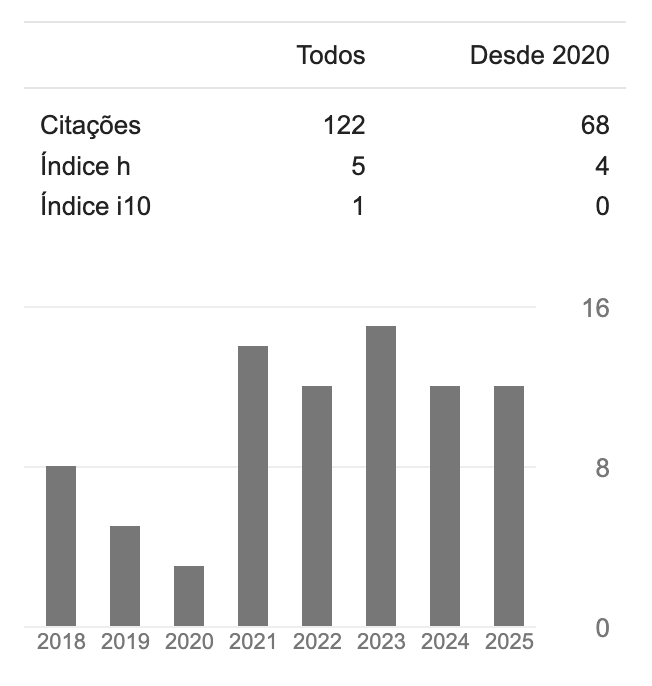TRADUÇÃO E NOTAS DE A TRANSITORIEDADE, DE SIGMUND FREUD
DOI:
https://doi.org/10.52521/poly.v17i3.14084Abstract
ABSTRACT
During the First World War in 1915, Sigmund Freud wrote Vergänglichkeit, a short essay that reflects, among other themes, on the ephemerality of life and beauty. Originally published in German, the essay explores how the awareness of transitoriness influences the human psyche through a dialogue between Freud, a young poet, and a melancholic friend. Freud discusses the fragility of beauty, the appreciation of transitoriness, mourning, libido, the impact of war, and the renewal of meaning in the face of the inevitability of decline.
Keywords: FREUD; PSYCHOANALYSIS; TRANSIENCE.
Downloads
References
Referências
Andreas-Salomé, L. (1964). The Freud Journal (S. A. Leavy, Trans. & Introduction). New York, NY: Basic Books, Inc.
Astor, D. (2016). Lou Andreas-Salomé. L&PM Pocket.
Becker, E. (1973). Denial of death. The Free Press.
Campbell, J. (2008). The hero with a thousand faces. New World Library.
Carrier, D. (2008). A world art history and its objects. Penn State Press.
Freedman, R. (1998). Life of a Poet: Rainer Maria Rilke. Northwestern University Press.
Freud, S. (1916). Vergänglichkeit. In Das Land Goethes 1914–1916. Ein vaterländisches Gedenkbuch (pp. 37-38). Stuttgart und Berlin: Deutsche Verlangs-Anstalt.
Freud, S. (1920). Jenseits des lustprinzips. Internationaler Psychoanalytischer Verlag.
Freud, S. (1949). Zeitgemässes über Krieg und Tod (1915). In: Gesammelte Werke, vol. X. Frankfurt am Main: Fischer Verlag, p. 323-55.
Freud, S. (1955). Hemmung, Symptom und Angst (1926). In Gesammelte Werke (Vol. XIV). London: Imago Publishing Co., Ltd.
Freud, S. (1957). Mourning and melancholia (1917 [1915]). In J. Strachey (Ed.), The Standard Edition of the Complete Psychological Works of Sigmund Freud (Vol. XIV, pp. 239-260). London: Hogarth Press and the Institute of Psycho-analysis.
Freud, S. (1957). On Transience (1916 [1915]). In J. Strachey (Ed.), The Standard Edition of the Complete Psychological Works of Sigmund Freud (Vol. XIV, pp. 303–307). London: Hogarth Press and the Institute of Psycho-analysis.
Freud, S. (1999). Trauer und Melancholie (1917 [1915]). In S. Freud, Gesammelte Werke – Chronologisch geordnet. Frankfurt am Main: Fischer Verlag.
Freud, S. (2000). Das Ich und das Es (1923). In Sigmund Freud Studienausgabe (Vol. 3, pp. 273-330).
Freud, S. (2022). Die zukunft einer illusion. BoD–Books on Demand.
Heidegger, M. (2012). Der ursprung des kunstwerkes. Klostermann.
Lehmann, H. (1966). A conversation between Freud and Rilke. The Psychoanalytic Quarterly, 35(3), 423-427.
Levine, M. (2018). Freud’s aesthetics: artists, art and psychoanalysis. In Psychoanalysis and Philosophy of Mind (pp. 137-162). Routledge.
Polan, D. B., Jauss, H. R., & Bahti, T. (1983). Toward an aesthetic of reception. Journal of Aesthetics and Art Criticism, 41(3), 354.
Razinsky, L. (2015). On Time, Transience and Literary Creation: Freud and Rilke a Century Ago. Forum for Modern Language Studies, 51(4), 464-479.
Rilke, R. M. (2013). Elegias de Duíno. Porto Alegre: Globo Livros.
Roudinesco, E., & Plon, M. (1998). Dicionário de psicanálise (V. Ribeiro, Trans.). Rio de Janeiro: Jorge Zahar.
Schopenhauer, A. (1919). Die Welt als Wille und Vorstellung, I. Brockhaus.
Vattimo, G. (1999). La fine della modernità. Milan: Garzanti.
Winter, J. (1998). Sites of memory, sites of mourning: The Great War in European cultural history. Cambridge University Press.
Downloads
Published
How to Cite
Issue
Section
License
Copyright (c) 2024 Matheus dos Reis Gomes

This work is licensed under a Creative Commons Attribution 4.0 International License.











